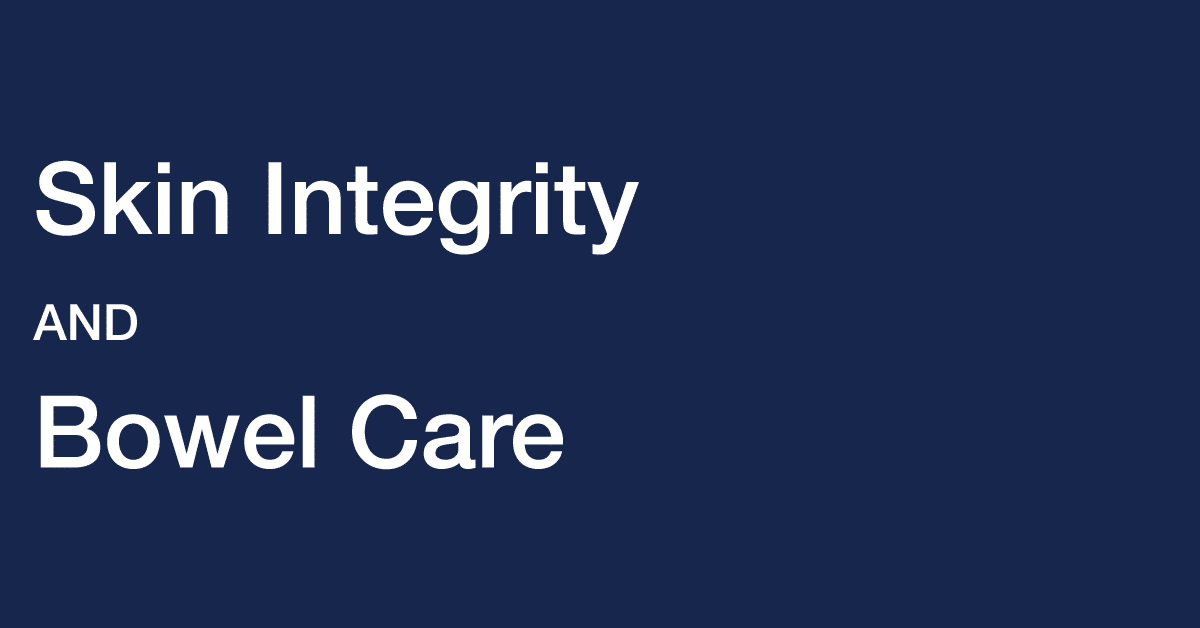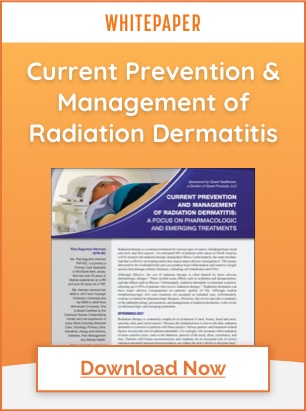
Skin Integrity and Bowel Care: Are Your Patients at Risk?
What does skin integrity have to do with bowel care? If you are asking this question, your patients might be at risk.
Improper bowel care for people with fecal incontinence can create a myriad of skin-related problems, including dermatitis, pressure ulcers, perianal skin breakdown, and wound contamination. Skin areas most affected are near the buttocks, hips, genitals, and between the pelvis and rectum (perineum).
Skin problems associated with fecal incontinence cause risk and discomfort to patients, reduced quality of life and independence, as well as increased costs to healthcare providers and institutions.
How Fecal Incontinence Affects the Skin
Exposure to urine and feces is one of the most common causes of skin breakdown, but did you know that fecal incontinence is hypothesized to act as a more potent risk factor for skin breakdown than urinary incontinence? Here are some of the more common incontinence related skin problems:
- Maceration: Over-exposure to moisture causes maceration of the skin and makes the skin very fragile. Once skin is macerated, even gentle rubbing by bed linens, diapers, and wash cloths can cause injury.
- Incontinence Dermatitis: Otherwise known as perineal dermatitis or diaper rash, this condition involves the irritation and breakdown of the skin as a result of over-exposure to moisture and chemicals in urine and feces.
- Fungal Infection: Damp, warm skin environment generally associated with incontinence is ideal for the proliferation of pathogenic fungi.
- Bacterial Infection: Incontinence allows the skin’s surface to contact bacteria from waste products. This is particularly dangerous for the elderly, whose skin may be characteristically dry. Dry skin provides an opportune breeding ground for bacterial growth since micro-organisms can be absorbed through skin cracks and fissures.
Common Incontinence Related Skin Problems
Incontinence Associated Dermatitis is the irritation, inflammation, and erosion associated with prolonged exposure of the skin to urine and stool. Among hospitalized patients, the prevalence rate of incontinence related dermatitis has been found to be as high as one third of patients1. Incontinence related dermatitis is also a factor when using an absorptive containment device such as an incontinence brief or pad, which raises the pH of the underlying skin and increases moisture retention around the skin.
Pressure Ulcers are more prevalent among people with incontinence. In one study2, 56.7% of patients with pressure ulcers also had fecal incontinence, making fecal incontinence one of the most common associated risk factors for pressure ulcers.
Aside from the many physical discomforts and risks associated with pressure ulcers, the presence of pressure ulcers has been shown to extend the length of hospital stays and increase treatment costs.
The Cost of Incontinence
The financial costs of incontinence to healthcare providers and institutions is high, around $9,500 per patient annually, including staffing costs (nursing and care staff spend nearly an hour per day, per patient, managing fecal incontinence and related issues), laundry, and incontinence supply costs.

Additionally, hospital-acquired pressure ulcers are associated with an annual excess cost of $10,845 (per patient). Skin breakdown due to fecal incontinence can lead to wound contamination, which also gives rise to longer hospital stays and increased healthcare costs.
Effective management of acute fecal incontinence and timely interventions will help prevent maceration, skin breakdown, and potential wound contamination, all of which are costly to both patients and caregivers.
Enemeez® and Fecal Incontinence Care
Enemeez® has several advantages over bisacodyl suppositories and other forms of fecal incontinence management.
Two-thirds of all bisacodyl suppository users regularly experienced mucous discharge, bleeding, or an episode of incontinence, which reduces a person’s quality of life and puts them at increased risk for skin breakdown and other incontinence related health problems. Bisacodyl users are twice as likely to have an episode of incontinence following a bowel care session than Enemeez® users.
Enemeez® produces no mucous discharge3, and users on average save at least 228 hours on bowel care per year compared to bisacodyl users. Reduced time spent sitting on a commode by Enemeez® users may reduce the risk of pelvic pressure ulcer development.
About Enemeez® and Enemeez® Plus
Enemeez® and Enemeez® Plus contain non-irritating formulas that are safe for daily, long-term use. They produce fast, predictable results, typically in 2-15 minutes4, may virtually eliminate episodes of incontinence5, and may assist in reducing complications of wound contamination associated with perianal pressure.
Enemeez® contains a delivered dose of 283mg of docusate sodium, which scored highest in overall symptom reduction. Enemeez® Plus includes 20mg of benzocaine, assisting in the anesthetization of the rectum and lower bowel. This formulation was developed for patients who experience painful bowel movements, hemorrhoids, fissures or autonomic dysreflexia.
Including Enemeez® products in your facility’s regimented bowel care program is a safe, proven, and effective way to maintain your residents’ bowel health, improve their quality of life and may reduce costs associated with fecal incontinence.
Sources:
- Nix DH. Validity and reliability of the Perineal Assessment Tool. Ostomy Wound Manage. 2002;48(2):43–49. 2. Maklebust JA, Magnan MA. Risk factors associated with having a pressure ulcer: a secondary data analysis. Adv Wound Care. 1994;7(5):25–42. 3. Mode of action. Alliance Labs in-house research. Customer Survey Feb 21, 2014 4. Federal Register / Vol. 50, No. 10 / Tuesday, January 15, 1985 / Proposed Rules; pgs. 2124-2158. 5. Alliance Labs In-house research. Customer Survey 4.27.2011.







